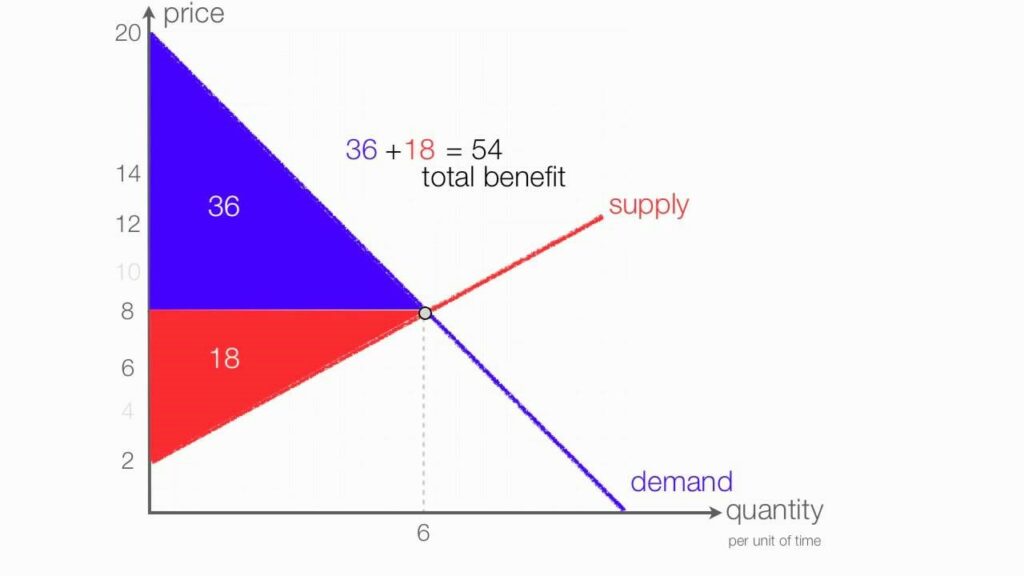ECON 2010 – Which of the following best defines consumer surplus
1-Which of the following best defines consumer surplus?
The producer surplus plus the social surplus
Elevate Your Writing with Our Free Writing Tools!
Did you know that we provide a free essay and speech generator, plagiarism checker, summarizer, paraphraser, and other writing tools for free?
Access Free Writing ToolsThe social surplus minus producer surplus
The amount a seller is paid for a good minus the seller’s actual cost
The difference between an item’s production cost and the amount paid by consumers
Answer: The difference between an item’s production cost and the amount paid by consumers
2-An increase in the quantity supplied can be the result from
The difference between an item’s production cost and the amount paid by consumers
an increase in supply.
a change in the number of suppliers
decreased demand.
Answer: The difference between an item’s production cost and the amount paid by consumers
Get economic homework help from our team of economic homework helpers who have drafted several economics papers that have helped our clients score good grades.
What is Consumer Surplus?
Sometimes, customers buy a product at a lower price than they are willing to pay. Take the example of a restaurant that sells full lunch for five dollars at a place where people would comfortably buy at $25. So, there’s a consumer surplus of over $20!
As a measure of consumer welfare, a consumer’s surplus is the excess social valuation of a product. Also referred to as a buyer’s surplus, consumer surplus is the economic measure of a buyer’s excessive benefits.
You can calculate the consumer surplus by a keen analysis of the actual price of an item (equilibrium price) and the price the customers are willing to pay.
The surplus occurs whenever the price that a customer is able and willing to pay is far higher than the market price. So, the surplus increases when the price of a commodity falls, and it reduces with the rise in the price.
Consumer surplus is a construct of the Marginal Utility Theory. The theory points out that if consumers buy several units of a product, they become unwilling to pay more for each. The marginal utility derived from the product diminishes with the number of units a customer buys.
Welfare economics typically rely on this theory to formulate tax policies for governments.
Calculating Consumer Surplus
The demand curve shows the relationship between the price and quantity of a product. The price takes the y-Axis while the quantity demanded goes to the x-Axis. The curve flows downwards due to the economic Law of Diminishing Marginal Utility.
Demand and supply curve showing how to calculate the Consumer surplus

Economists view the curve as a clear graphic representation to calculate different metrics. So, you can measure the consumer surplus by analyzing the curve.
Economists calculate the consumer surplus by depicting it in the triangular Area below the demand curve between the market price and the customer’s willingness to pay. So, the total economic surplus is the producer’s surplus added to the consumer’s surplus.
The consumer surplus is calculated as the Area of the triangle as follows:
Consumer surplus = Area of the triangle under the curve
= ½ base x height
= (½) x Qd x ΔP
Qd= quantity at equilibrium (where the supply and demand curves meet)
ΔP= Pmax-Pd
Pmax= the price that a customer is willing and ready to pay
Pd= Price at equilibrium (the point when there’s equal supply and demand)
Some of the assumptions of the formula for calculating the Consumer Surplus include the following:
- Ceteris Paribus: customer’s tastes and preferences do not change
- Utility is measurable
- The product has no competitors or substitutes
- The Law of diminishing marginal utility applies
- The marginal utility that money possesses remains constant
Pros of Consumer Surplus
When the consumer surplus is high, the commodities have a lower market price than what customers can spend on them. An increased consumer surplus index indicates that the products are cheaply priced. From the consumer’s welfare perspective, such a surplus suggests affordability.
Then, the economic perspective finds a high consumer surplus as an indication of no inflation. Inflation makes the prices of essential commodities rise. In most cases, this ends up hurting the people’s purchasing power and interrupts commerce. High consumer surplus, therefore, shows a satisfied consumer base.
Also, a high consumer surplus could indicate a high degree of healthy competition, efficiency in production, and technological advancement. An economy with these indications is considered excellent and prosperous.
Examples of Calculating Consumer Surplus
If you get a good deal at the store, you owe it to the consumer surplus. You haggle the price of a commodity to increase your consumer surplus. And, sometimes, the market or company offers you a consumer surplus.
For example, you are booking a package for vacation at a budget of $25,000, but they offer $15,000. So, the package is far cheaper than you intended to pay. So, you have a consumer surplus of a whopping $10,000.
It’s worth noting that businesses balance out their offers by shifting to the producer surplus during the peak season. In the case of the vacation, the company may decide to raise their prices to $25,000 for a package. So, they’ll get back their $10,000.
Related answered questions on Influencing Policy

Special offer! Get 20% discount on your first order. Promo code: SAVE20